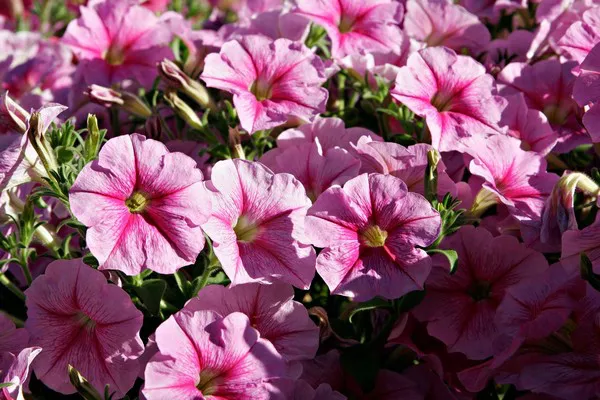Flowers, with their enchanting beauty and aromatic allure, have long been a symbol of nature’s grace. However, for those who share their homes with feline friends, the world of flora can also harbor hidden dangers. This comprehensive guide aims to shed light on flowers that pose risks to cats, ensuring that pet owners are well-informed about potential hazards and can create a safe and blossoming environment for their beloved companions.
1. Lilies: The Silent Threat Amongst Blooms
As innocent as they may appear, certain flowers within the lily family stand out as potent threats to feline companions. Varieties such as Easter lilies, Tiger lilies, and Daylilies contain compounds that can lead to severe kidney damage or failure if ingested by cats. Even minimal exposure, such as licking pollen from their fur, can have dire consequences. Awareness of lily toxicity is crucial, as prompt veterinary intervention is vital when a cat is suspected of ingesting any part of these beautiful yet perilous flowers.
2. Azaleas and Rhododendrons: A Spectrum of Danger
Known for their vibrant and showy blossoms, azaleas and rhododendrons add a burst of color to gardens. However, these flowering shrubs conceal toxins known as grayanotoxins. When curious cats nibble on leaves or flowers, it can lead to symptoms ranging from vomiting and diarrhea to more severe complications such as drooling, lethargy, and potentially fatal heart arrhythmias. Recognizing the presence of these plants in and around the home is essential for preventing accidental exposure.
3. Tulips and Hyacinths: Spring’s Alluring Perils
Springtime heralds the arrival of tulips and hyacinths, captivating with their vibrant hues and sweet fragrances. However, beneath their charming exteriors lie potential dangers for feline friends. The bulbs of these flowers contain substances called alkaloids, which, when ingested, can cause gastrointestinal upset, drooling, and, in severe cases, difficulty breathing. Pet owners cultivating these bulbs indoors or in outdoor gardens should exercise caution and consider feline-friendly alternatives.
4. Chrysanthemums: Petals of Caution
Chrysanthemums, popular for their colorful blooms and diverse varieties, house pyrethrin compounds. While these compounds are commonly used in insect repellents for their insecticidal properties, they can be toxic to cats when ingested. Symptoms of chrysanthemum toxicity include vomiting, diarrhea, drooling, and, in rare cases, more severe neurologic effects. Pet owners must be mindful of floral arrangements containing these blooms and opt for safer alternatives.
5. Autumn Crocus: Beware the Fall Bloom
Contrary to its name, the Autumn Crocus is a flower that blooms in the fall, concealing a potent toxin called colchicine. Ingestion of any part of this plant can lead to severe gastrointestinal distress, kidney and liver damage, respiratory failure, and even death. Recognizing the distinctive purple or white flowers of the Autumn Crocus is essential for preventing accidental exposure, especially in outdoor spaces frequented by curious feline companions.
6. Oleander: A Toxic Beauty in Bloom
Oleander, with its clusters of vibrant flowers and evergreen foliage, may add a touch of exotic beauty to gardens. However, this ornamental shrub contains cardiac glycosides, toxins that can affect the heart and gastrointestinal system in cats. Ingestion of oleander can lead to symptoms such as drooling, lethargy, tremors, and, in severe cases, fatal heart arrhythmias. Pet owners should exercise caution and consider feline-safe alternatives in their landscaping choices.
7. Sago Palm: Foliage of Concern
While not a flowering plant, the Sago Palm deserves mention due to its prevalence in both indoor and outdoor landscapes. All parts of the Sago Palm, especially the seeds, contain a potent toxin called cycasin. Ingestion can lead to severe liver damage, vomiting, diarrhea, seizures, and, tragically, death. Pet owners should be vigilant about the presence of Sago Palms in their surroundings and take preventive measures to ensure their cats are not exposed to this hazardous plant.
8. Daffodils: Sunshine Blooms with a Shadow
Daffodils, heralding the arrival of spring with their cheerful yellow blossoms, contain compounds called lycorine. When ingested, daffodil bulbs or flowers can cause symptoms such as vomiting, diarrhea, and abdominal pain in cats. Pet owners should exercise caution when cultivating daffodils and consider alternative blooms that pose no threat to their feline companions.
Conclusion
As guardians of feline companions, our responsibility extends beyond providing love and care to creating a safe haven that excludes potentially harmful elements. By understanding the flowers that pose risks to cats and making informed choices about floral arrangements and landscaping, petowners can cultivate an environment where both flora and feline friends can coexist harmoniously. Vigilance, awareness, and a commitment to feline-friendly choices ensure that the beauty of flowers never compromises the safety and well-being of our cherished cat companions.


